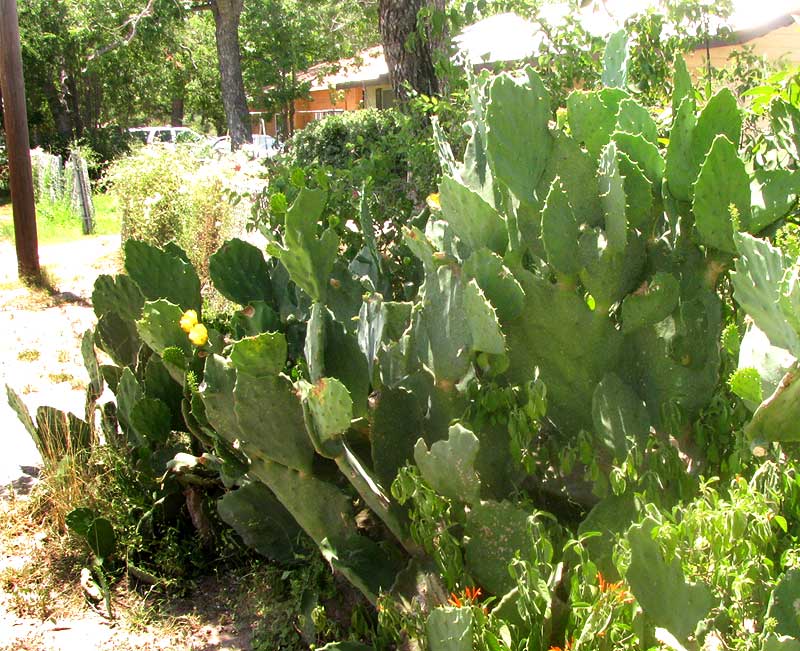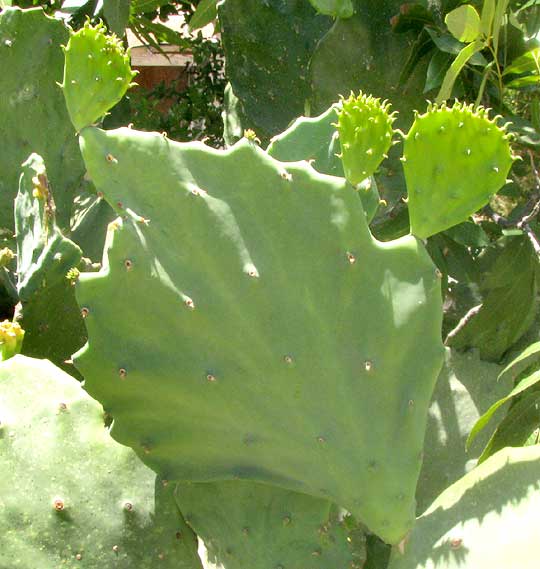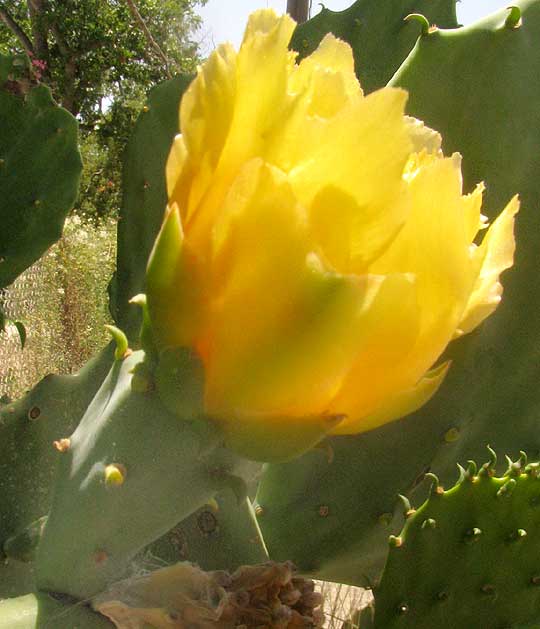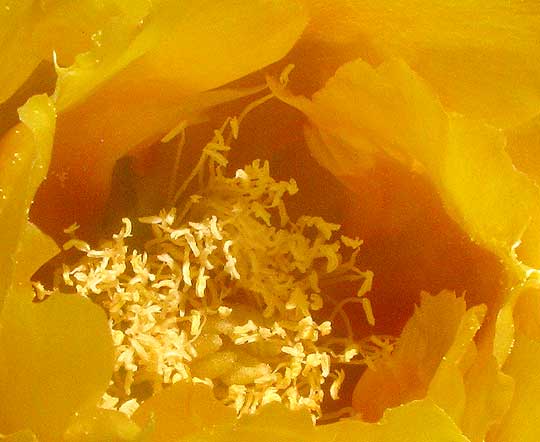Excerpts from Jim Conrad's
Naturalist Newsletter
from the July 20, 2014 Newsletter issued from the Frio Canyon Nature Education Center in the valley of the Dry Frio River in northern Uvalde County, southwestern Texas, on the southern border of the Edwards Plateau; elevation ~1750m (~5750 ft); N29.62°, W99.86°; USA
INDIAN-FIG PRICKLYPEAR CACTUS

This week along a backstreet in Uvalde,the above pricklypear turned up robustly sprawling onto a weedy sidewalk, even bearing flowers. I'd assumed it was a form of the famously edible Indian-fig Pricklypear, Opuntia ficus-indica, though one with scalloped pad margins unlike I've ever seen on that species; however, that's a very variable taxon. Below, you can see tender little pads emerging from a large mother-pad:

That mother-pad displays broad, irregularly scalloped margins and a fanlike system of low ridges originating at its base unlike anything I've seen in Mexico. However, the inner pads are huge just like those of big Indian-figs:

Here's a side view of a flower, which looks just like the yellow flowers of Indian-figs:

A peep into the blossom's interior showing many pollen-producing stamens surrounding several yellow, finger-like stigma lobes in the center is shown below:

Indian-Fig stigma lobes are yellow, exactly as in the picture.
*UPDATE: However, in 2024 I uploaded the above photos to iNaturalist, where user "agravia" recognized not an Indian-fig Pricklypear with unusually scalloped pad margins, but rather a species often displaying such pad margins, and that's OPUNTIA DILLENII.
In terms of identification, that's a tricky taxon. As stated at the Opuntiads.Com website, "Some botanists treat O. dillenii as a variety of O. stricta, and some treatments don’t even recognize it." Most images of it show pads with spines, often quite a few, though it's described as sometimes being spineless, like our individual. One interesting field mark of the taxon is that its soft, pointed, soon-falling-off leaves, as seen above on the newly sprouted pads, hook at their tips, cat-claw-like. Many images of the cactus show pads with margins not scalloped. This cactus has varying appearances, which often overlap other species. If it weren't for our plant's very scalloped pad margins, I'd resist the ID by "agravia" as Opuntia dillenii, and stay with it being one of many manifestations of Indian-fig, but those pad margins really are remarkably scalloped.
Opuntia dillenii is a commonly occurring cactus in various habitats, including weedy roadsides, along the US southern Atlantic coast, the Caribbean Islands, the Gulf Coast of Mexico, and northern South America, and in certain countries it's become an aggressive invasive species. Here in Uvalde, Texas, some homesick East-coaster must have planted it.
In Hartmut Böhm's 2008 paper "Opuntia dillenii - An Interesting and Promising Cactaceae Taxon," says that the cactus is a promising crop plant, with edible fruits.